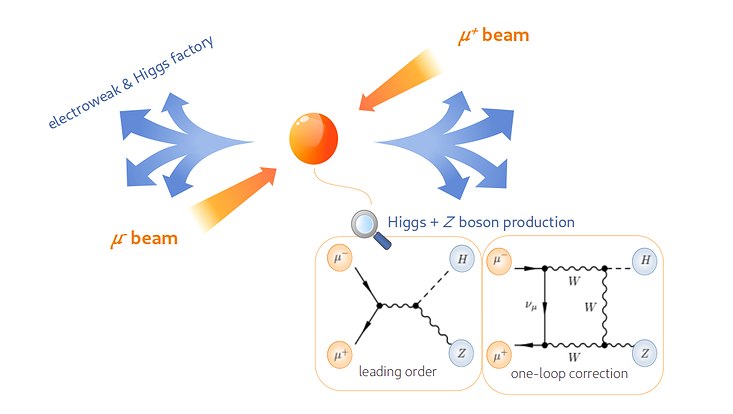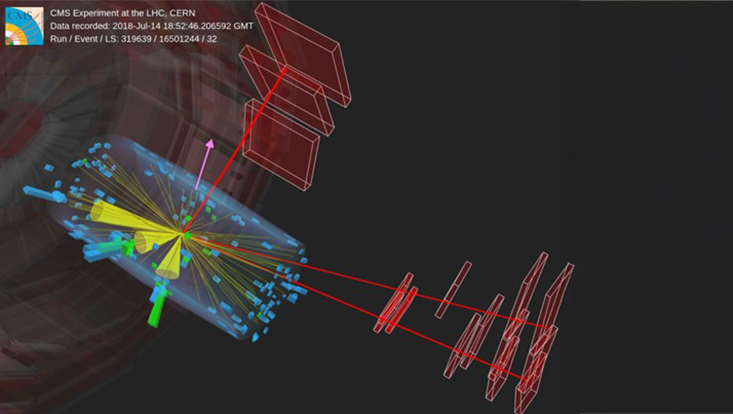Best Paper Awards 2023Precise predictions for a future muon collider with high new physics discovery potential
18 April 2023

Photo: P. Bredt
The Standard Model of particle physics has proven itself excellently as a theory of elementary particles out of which our world consists. However, there are hints in nature like for example the observation of dark matter indicating a possible incompleteness of this theory. In this context, a very interesting question to pursue is the origin of the masses of particles. Even though the discovery of the Higgs particle 10 years ago answers this question to some degree, we still do not fully understand the details: Curiously, all parameters seem to be fundamentally fine-tuned.
A way for physicists to investigate this is to stress-test the Standard Model by making precise predictions for high-energy collider experiments. If one finds deviations in the measurements with respect to these predictions, there would be evidence for physics beyond that old model. In particular, resolving the properties of the Higgs boson to high accuracy now yields the most promising direction for new physics searches. Current experiments however miss the corresponding desired experimental accuracies. For this reason, new collider concepts are being developed that target the high production rates of the Higgs boson. A special idea is the concept of a muon collider: Accelerated muons and anti-muons collide against each other and subsequently produce a large variety of particles. Due to the large mass of the muon, as one of the heavier brothers of the electron, the energies of the two colliding beam particles to an unprecedented level could be reached.
By means of Monte-Carlo programs the probabilities for certain processes to happen at such a collider can be simulated. In general, predictions can be calculated in approximations for which terms scale with powers of the coupling strength of the interacting particles. Typically, the lowest-order term is the numerically largest, while the subsequent ones – the correction terms – are subleading. Particularly, some contributions to the correction terms can be illustrated as loops with additional interactions as shown exemplarily in the graphic above. These electroweak loop corrections yield negative contributions to the production rate and increase in size with the energy of the process and the number of produced particles.
In our study, we computed the probability for the production of multiple electroweak bosons – among them the W, Z and the Higgs boson. We included the first-order electroweak corrections in order to achieve more precise predictions from the Standard Model. Quantitatively, we observed a reduction of up to 40% due to this effect for four produced heavy bosons at the proposed collider energy of 3 TeV. Even for the simple example, Higgs plus Z production, the total rate shrinks about 20% for up to 14 TeV.
Due to these large percentages, including the electroweak precision terms in the simulation for a muon collider is an important input to many future measurements: We would be either sensitive to the physics playing a role beyond our well-known Standard Model, or there is at least a high probability that we can exclude any other theory.
Original Publication
P. M. Bredt, W. Kilian, J. Reuter, P. Stienemeier , “NLO electroweak corrections to multi-boson processes at a muon collider,” J. High Energ. Phys. 12 (2022) 138.
The publication was awarded with the Best Paper Award 2023.


